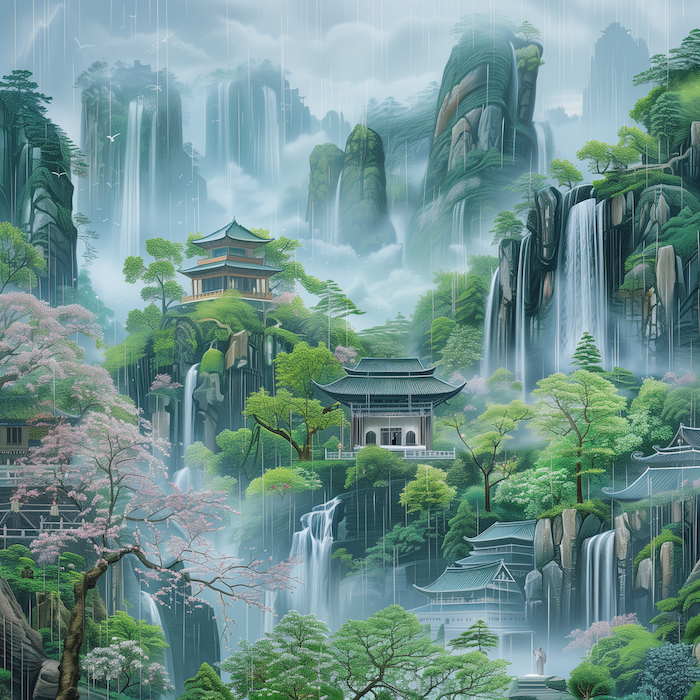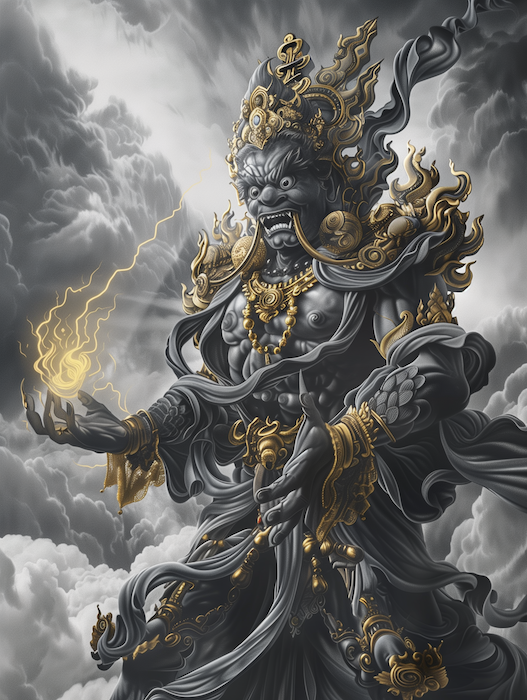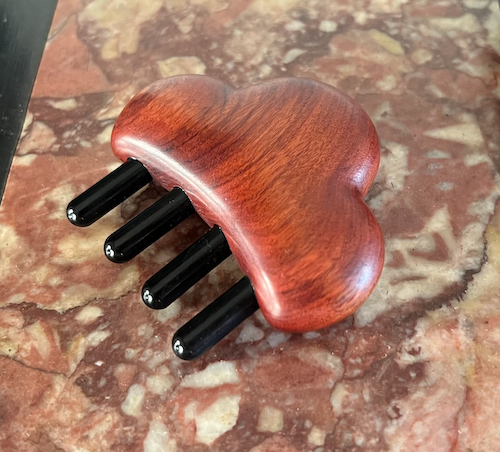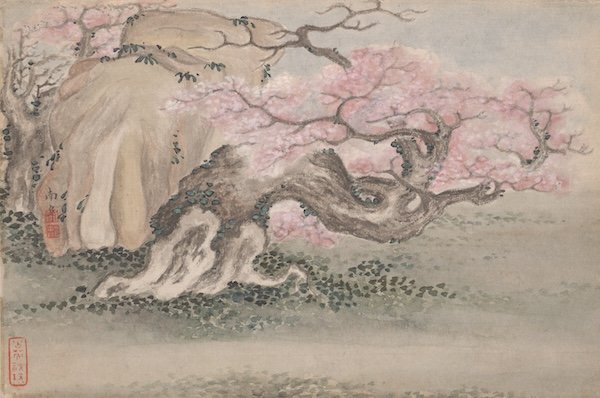-
Apple Water 苹果水 – a Snack to Aid Digestion, Benefit the Spleen/Stomach
Late summer is associated with the spleen organ system, the foundation of digestion. Proper digestion of the food we eat is so important for both general health and supporting neigong practice. With apples now ripening and ready for harvest, now is a great time to make use of local, in-season fruit and support our spleen/stomach with this delicious snack that aids digestion and helps to remove dampness (the spleen’s worst enemy). Apple water (or we could call it apple soup) is also a great prelude to pear soup, one of the best snacks to promote health and balance in autumn. The second half of the summer is a good time…
-
Qi-charged Tea and Emitting Qi into Substances
A specialty of the style of classical Chinese medicine passed down within the Gengmenpai lineage is their use of special pills (dan 丹) that have gone through a special process in which an adept practitioner emits their own qi and injects it into the medicine to greatly enhance the medicinal effect. I have no doubt that it was this extra touch given to the medicine that caused me to have the experience that I did the first time I took several of their signature huaxuedan (化血丹) at once years ago. What is interesting, is that it was explained (and in some cases demo’d) to us how qi can be emitted…
-
Summer Wellness
Summer is the peak of Yang energy. Yang energy has been fully released outward and so we have sunlight, warmth, and plants and animals flourishing. The process of growing and ripening is underway. Yang qi also vaporizes moisture and can therefore create the condition of dampness in the environment. Interestingly, although yang is at its peak, summertime is also a time when yang is very much needed, and perhaps counterintuitively, Chinese health sciences would caution that we still need to be weary of cold things (food, environment, etc). Summer corresponds to the Fire phase (huǒ 火), the heart organ system, and the bitter flavor. It is recommended to get up…
-
Green Tea 绿茶: A Refreshing Spring and Summer Beverage with Health Benefits
As we transition into summer we reach a point in the year in which many green teas have been freshly harvested and processed and are just now hitting the market. Green tea is a healthy, delicious, and refreshing beverage that is especially suitable during the warmer months. I have met many people who think that they don’t like green tea, but in fact have never tried anything other than green tea that is mass-produced, low-quality, and generally stale. It’s one thing to find high-quality green tea, but perhaps more challenging is getting it fresh! It’s best to buy it as soon after harvest as possible from a vendor that takes…
-
Li Xia Dan (Beginning of Summer Eggs) 立夏蛋
As we pass the Li Xia “Beginning of Summer” 立夏 solar term, we begin to transition away from the spring season and into the summer. Summer is associated with fire and the heart organ system, and at this time, the kidneys, associated with water, are in their weakest state. This is an important time to prepare for this transition and nourish our kidney jing (essence). Our kidney system is foundational to the three treasures (jing, qi, and shen) and therefore extremely important for those who seek progress in neigong practice. In general, nourishing our kidney jing at this time makes our health strong and robust during the shift of seasons…
-
Spring Wellness: Three Flower Tea 三花茶
There is a Chinese folk proverb: 春饮花茶,夏饮绿茶,秋饮青茶,冬饮红茶。Drink flower tea in spring, green tea in summer, qing cha 青茶 (light oolong) in autumn, and black tea in winter. Spring is the season associated with waking up, growth, and the liver organ system. It is when all the flowers start blooming outdoors. So it is intuitive that a refreshing and fragrant flower tea would be appropriate at this time, especially considering that many types of flower tea have beneficial properties for our liver organ system. In particular, we will look at variations of Three Flower Tea (San Hua Cha 三花茶). Flower teas are usually pretty gentle, however, as with everything it is…
-
Vajrapani: the Protector of Shaolin
Vajrapani is a deity with special significance for Shaolin Temple who is rich with symbolism. Could he also represent the skill of electric-like qi emission? As discussed below, this idea may not be too much of a stretch. Vajrapani is the patron Bodhisattva and protector deity of Shaolin Temple. In Chinese he is called Jingang Shou Pusa (金刚手菩萨), literally, “holder of the vajra.” The vajra is both a symbolic ritual object and a weapon, and could be translated from Sanskrit as either “thunderbolt” or “diamond.” Vajrapani is a deity that is not only seen as a protector and source of strength, but also represents some of the most interesting juxtapositions…
-
Spring Wellness: Ox Horn Gua Sha the Liver, Gallbladder, and Spleen Meridians
Spring is the season associated with the liver and the gallbladder organ systems, and so it is a great time to work this daily yangsheng practice into your routine. In the Huangdi Neijing (黄帝内经) it says that the liver is the “general of the human body” (人体的将军), tasked with leading an army to resist toxins that are accumulating within and invading from without. The liver is responsible for maintaining the smooth flow of qi and blood. A variety of problems including poor quality of sleep, waking up in the middle of the night every night (usually between 1-3am), emotional imbalance, procrastination, and irregular menstruation in women are all common signs…
-
Spring Wellness
Spring is the beginning. It is the season of renewal and of nature coming to life. Yang qi has been in storage during the winter and it is now released; its emergence resulting in growth, flourishing, and blossoming. It is a season of harmony and the time to shake off any stagnant energy, get outside for a stroll through the park or a hike in the mountains, and to avoid sitting around and dwelling on things. Spring corresponds to the Wood phase (mù 木) and the liver organ system. In spring it is recommended to get up early, but also to go to bed early to be sure to nourish…
-
Fagong Practice: Assisted Faqi, Practice Moving Non-living Materials
The skill of electric-like qi emission (fagong 发功) is not something you encounter every day. It is a level of skill that typically takes years to attain and is often aided by various “boosts” and adjustments from a master as the student gradually develops. Practicing fagong “with assistance” is sort of like a way for a student to begin to practice this skill with “training wheels,” so that they can start to develop the necessary control and mind-body coordination needed for this never-before-used function of their body. In light of the above, the majority of western students who are practicing this skill (as taught, for example, within the Gengmenpai and…









